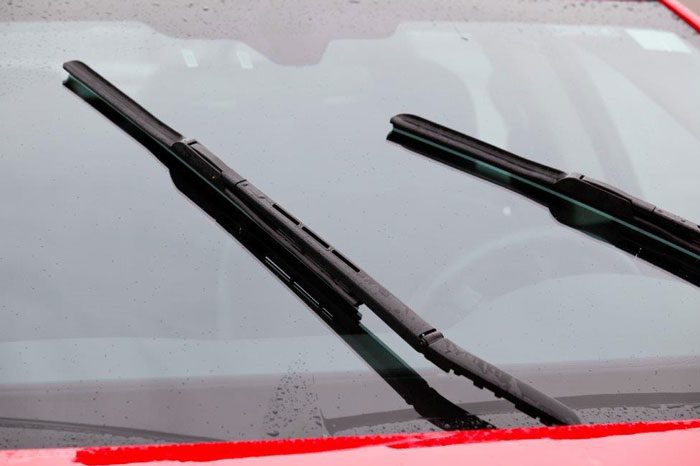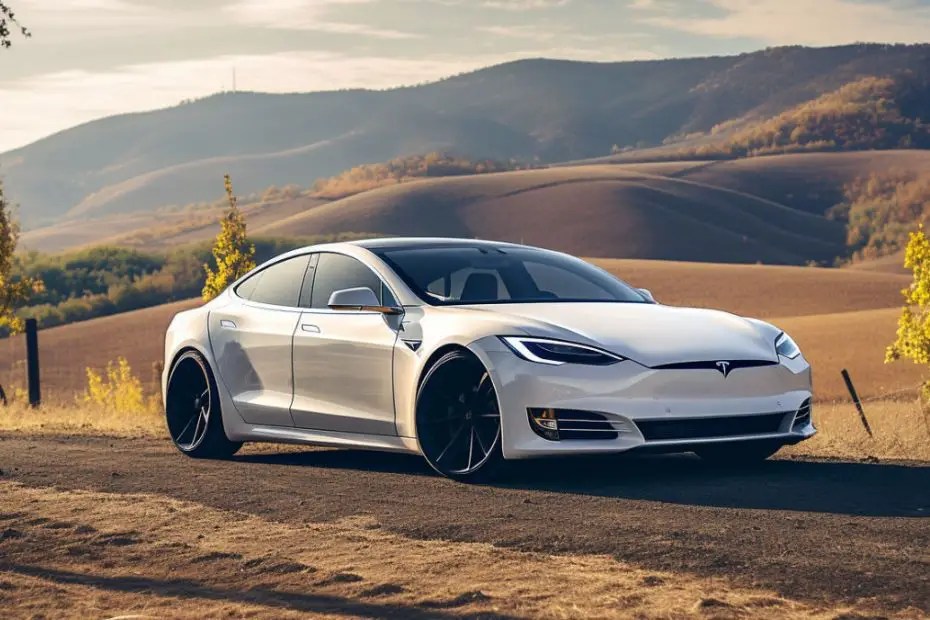Malfunctioning wipers can greatly reduce visibility during rain and snow. Driving your Tesla will be more risky in such a situation. You must resolve the issue to ensure driving safety.
So, why are the Tesla wipers not working? Mechanical or electrical problems can cause Tesla wipers to stop working. Mechanical problems include bad wiper linkage, blurred front camera, frozen wiper blades, clogged wipers, etc. Electrical problems include faulty wiper switches, blown fuses, bad wiper motors, etc. Software problems can also cause Tesla wipers to stop working.
Learn all possible reasons behind this problem in detail and how to fix each of these reasons to get the wipers working again.

Tesla Wipers Not Working: Detailed Mechanical Reasons and Solutions
I will discuss the problems separately so that you can quickly head to the relevant section. Remember, if there is a noise from the motor, the issue is probably mechanical. In the case of electrical issues, there will be no noise from the motor. There can be exceptions as well.
1. Bad Wiper Linkage
The power from the wiper motor reaches the wiper arms through the linkage. This linkage is a part of the mechanical unit. Rubber bushings hold these linkages in place. Over time, the rubber bushings can wear out or become brittle.
Once the bushings are worn or broken, the linkage will be displaced. In that case, the wiper motor will work, but the wiper arms will not move. It can happen more in regions with cold climates.

Symptoms
- You will hear a growling noise from the wiper motor.
- The wiper arms may move a bit.
Solutions
- Turn the car off from the main screen.
- Open the hood and remove the top panel.
- Reach below the windshield and find the wiper linkage units.
- Remove the rubber bushings from the linkage.
- Check the linkage connection and fix it in place.
- Install new rubber bushings.
If you are unable to do the above tasks, take the vehicle to the service center.
2. Blurred Front Camera
Many vehicles use rain sensors to turn the wiper on or off. Tesla uses the front camera to sense rain outside. The system analyzes the video feed to find out rain-like substances. Sometimes, dirt or dead bugs on the camera might trick the system.
If dirt or bugs block the front camera, the vehicle will not be able to sense rain outside. So, the wipers won’t work.

Symptoms
- Even though it is a mechanical problem, there will be no sound from the wiper motor.
- You will see no wiper movement at all.
Solutions
- You have to clean the front camera housing and the windshield.
- Remove the front camera trim by prying the plastic cover.
- Use a soft-bristle brush to remove any dirt blocking the camera lens.
- Spray the windshield with a liquid cleaner and wipe any debris from the windshield.
- Close the front camera trim and try turning the wipers on.
3. Frozen Wiper Blades
This is a pretty common reason in cold climate regions. At extremely cold temperatures, the water between the windshield and the wiper blades gets frozen. Heavy snow can also freeze the wiper blades.
In this case, the wiper motor will work, but the wiper arms will not move. Even if there is free space on the sides, a heavy snow layer on the wiper blades can also jam the blades.
Symptoms
- You will hear the wiper motor noise.
- The wiper blades might vibrate a bit but won’t move.
Solutions
- You should remove the heavy snow layer first. Use a snow brush to remove the loose snow layer from the top.
- Don’t pour hot water on the wiper blades or the windshield to defrost the blades. Instead, use a de-icing spray on the wiper blades. The spray will quickly make the blades movable.
4. Clogged Wipers
The point where the wiper blades are connected to the mechanical linkage can accumulate dust or debris. Over time, the dust or debris can clog the joint and cause the wipers not to work.

Symptoms
- There will be no apparent mechanical or electrical problems.
- The motor will make a noise, and the wiper blades can vibrate. Sometimes, the blades will struggle to move or move very slowly.
Solutions
- It is best not to dismantle the wiper unit yourself. Book a service using the Tesla app and take the vehicle to the service center. It might cost below $100 to clean the clogged wipers.
Tesla Wipers Not Working: Detailed Electrical Problems and Solutions
The following electrical reasons can contribute to the malfunctioning of Tesla wipers.
1. Faulty Wiper Switch
The wiper switch in your Tesla is located at the end of the turn signal lever. If the switch has faulty connections or is broken, the wiper will not work. If the switch goes bad when the wipers are off, you won’t be able to turn them on. Similarly, active wipers can’t be turned off with a broken switch.

Symptoms
- The voice command or the touchscreen command will activate the wipers, but the switch won’t work.
Solutions
- You should take the vehicle to the service center. Get the wiring and the switch checked by the technician. Replacing the switch will cost about $80-120, including parts and labor.
2. Blown Wiper Fuse
Like other electrical components, the wiper motor also has a fuse to protect it from surges. If your vehicle has a mechanical issue with the wiper and you continue to run the wiper motor, the fuse might blow away.
After that, the wiper motor will not work. So, the wipers will not turn on.
Symptoms
- As the motor is faulty, there will be no motor noise.
- Wiper blades will not vibrate or try to move.
Solutions
- Turn the vehicle off using the main screen and open the hood.
- Remove the top panel and locate the fuse box inside.
- Find the wiper motor fuse by checking the user manual. In most models, the F118 fuse is for the wiper motor.
- Take the fuse out and check if it is blown. If so, install a new fuse with the same amperage. It will cost about $70.
3. Bad Wiper Motor
Forceful use of the wiper motor when the blades are frozen can cause the motor to go bad. If the wiper motor is bad, the wipers on your Tesla will not work. If none of the above reasons are apparent, you can suspect the wiper motor.

Symptoms
- Like other electrical problem symptoms, there will be no motor noise.
- The wipers won’t activate with the voice command, screen, or the switch.
Solutions
- You have to take the car to the service center and get the wiper motor checked.
- Replacing the wiper motor can cost about $280-$320, including parts and labor.
Software Problems Behind Tesla Wipers Not Working
Besides mechanical and electrical problems, some software issues can deactivate the wipers on your Tesla. Here is how to solve them.
1. Software Update Is Missing
The Tesla software should be regularly updated to enjoy the latest features. If you haven’t updated the software version, it can deactivate some features. Unfortunately, the auto wiper feature is one of them.

Solutions
- You should tap Controls on the main screen and then tap on the Software tab. Find the update option on the right side. Check for updates and install if one is available.
- Reboot the car after the update, and the wipers should now work fine.
2. Software Bugs
Even the latest updates aren’t free from software bugs. A software bug can prevent the wipers from working.
Solutions
- You have to wait for the next security patch from Tesla. Reach out to customer support and inform them of the issue.
FAQs
Here are answers to some commonly asked questions about Tesla wipers not working. Check them out.
If it is a software problem, resetting Tesla wipers may activate them. But you have to fix mechanical and electrical problems first.
Yes. Doing this will make cleaning wipers easier. Go to Controls and then choose Service. Tap the wiper service mode on to lift the wiper blades a bit.
It is better not to use automatic mode unless it rains too often. In the dry season, operating wipers manually is better.
Conclusion
Even the wipers on your Tesla are so technologically advanced that a bit of a problem can stop them from working. Finding the right reason and fixing the problem requires deeper knowledge about the mechanism. So, why are Tesla wipers not working? It can happen due to mechanical, electrical, or software issues.
Bad wiper linkage, dirty front camera, frozen wiper blades, faulty switches, blown fuses, bad wiper motors, software bugs, etc., are the most common reasons. I showed you how to tackle each problem to make the wipers work again. Handle the wipers carefully to prevent any damage to them.
